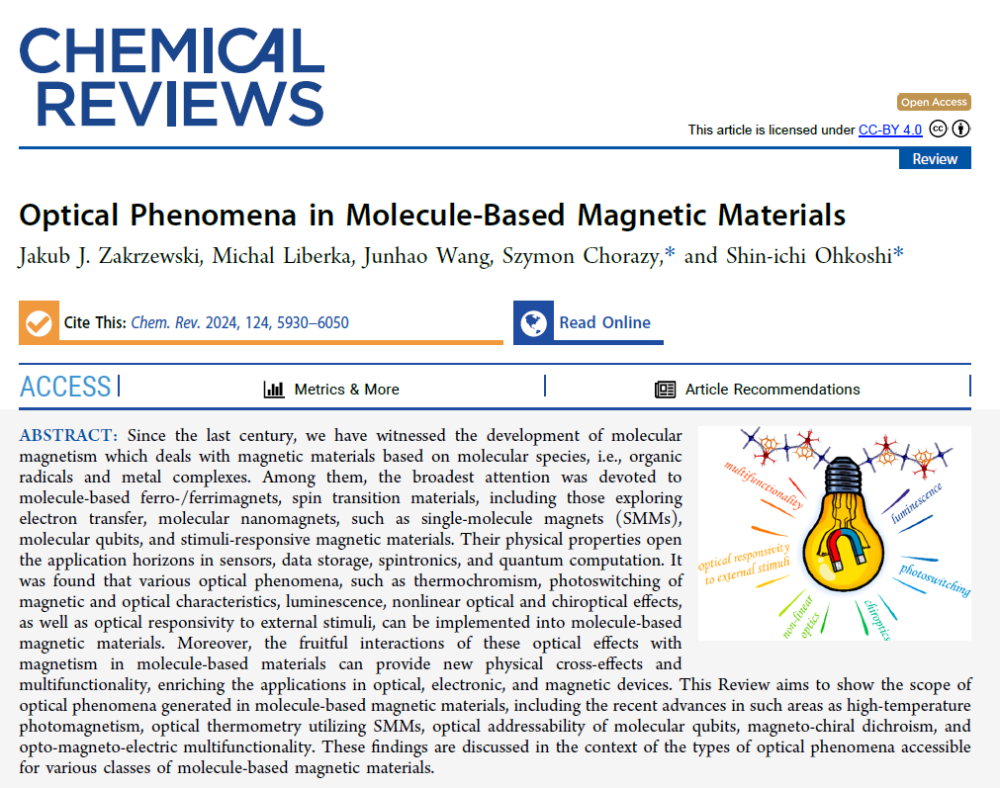
A review paper written by members of the Multifunctional Luminescent Materials Group: Jakub Zakrzewski, M.Sc., Michal Liberka, M.Sc., and Dr. habil. Szymon Chorąży, Prof UJ, has been published in prestigious Chemical Reviews. The paper was co-authored with Dr. Junhao Wang from the University of Tsukuba and Prof. Dr. Shin-ichi Ohkoshi from the University of Tokyo. In the article entitled "Optical Phenomena in Molecule-Based Magnetic Materials", the authors discuss the major developments in the generation and study of various optical effects in molecular magnetic materials, i.e., those based on metal complexes and organic radicals. Particularly in the last two decades, it has been shown that various optical phenomena such as thermochromism, photo-switching of physical properties, luminescence, non-linear optical and chiro-optical effects, as well as the sensitivity of optical properties to external factors, can be introduced into molecular magnetic materials, which have been constructed for various purposes since the 1980s and 1990s. Moreover, it has been shown that combining optical effects with molecular magnetism leads to unique multifunctionality and advanced cross effects, enriching the potential applications of the resulting opto-magnetic materials in optical, magnetic, and electronic devices. The published paper presents the scope of optical phenomena generated in molecule-based magnetic materials, including the recent advances in such areas as high-temperature photomagnetism, optical thermometry using single-molecule magnets (SMMs), optical addressability of molecular qubits, magneto-chiral dichroism, and opto-magneto-electric multifunctionality. A significant part of the presented achievements is the result obtained by scientists from our Faculty, Inorganic Molecular Materials Group, led by Prof. Dr. Robert Podgajny and Dr. habil. Dawid Pinkowicz, Prof. UJ, as well as by Dr. habil. Szymon Chorąży, Prof.UJ, and members of his research group dealing with, among other things, the combination of luminescence and molecular magnetism.
The preparation of this article was financially supported by research grants: Starting Grant ERC (LUMIFIELD, 101042112) and OPUS-21 Nacional Science Centre (2021/41/B/ST5/02544).
Congratulations to the Authors!
According to the list of scientific journals and peer-reviewed materials of international conferences of the Ministry of Education and Science, the number of points assigned to Chemical Reviews is 200 (2-year Impact Factor = 62.1)
Chem. Rev. 2024, 124, 5930–6050.


